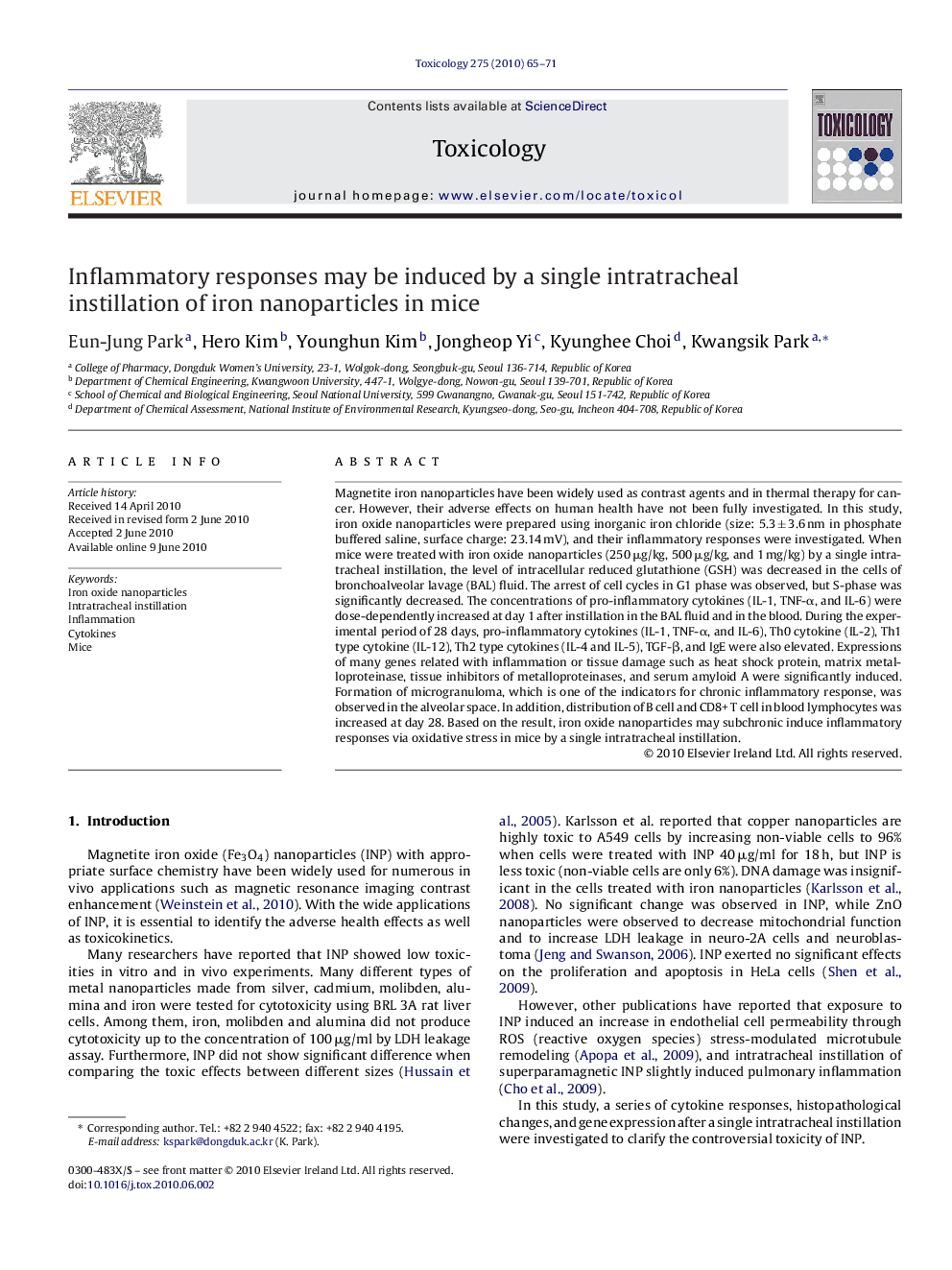| Article ID | Journal | Published Year | Pages | File Type |
|---|---|---|---|---|
| 2596390 | Toxicology | 2010 | 7 Pages |
Magnetite iron nanoparticles have been widely used as contrast agents and in thermal therapy for cancer. However, their adverse effects on human health have not been fully investigated. In this study, iron oxide nanoparticles were prepared using inorganic iron chloride (size: 5.3 ± 3.6 nm in phosphate buffered saline, surface charge: 23.14 mV), and their inflammatory responses were investigated. When mice were treated with iron oxide nanoparticles (250 μg/kg, 500 μg/kg, and 1 mg/kg) by a single intratracheal instillation, the level of intracellular reduced glutathione (GSH) was decreased in the cells of bronchoalveolar lavage (BAL) fluid. The arrest of cell cycles in G1 phase was observed, but S-phase was significantly decreased. The concentrations of pro-inflammatory cytokines (IL-1, TNF-α, and IL-6) were dose-dependently increased at day 1 after instillation in the BAL fluid and in the blood. During the experimental period of 28 days, pro-inflammatory cytokines (IL-1, TNF-α, and IL-6), Th0 cytokine (IL-2), Th1 type cytokine (IL-12), Th2 type cytokines (IL-4 and IL-5), TGF-β, and IgE were also elevated. Expressions of many genes related with inflammation or tissue damage such as heat shock protein, matrix metalloproteinase, tissue inhibitors of metalloproteinases, and serum amyloid A were significantly induced. Formation of microgranuloma, which is one of the indicators for chronic inflammatory response, was observed in the alveolar space. In addition, distribution of B cell and CD8+ T cell in blood lymphocytes was increased at day 28. Based on the result, iron oxide nanoparticles may subchronic induce inflammatory responses via oxidative stress in mice by a single intratracheal instillation.
